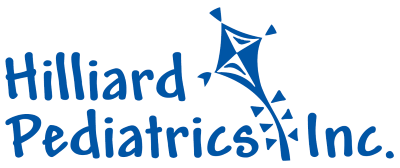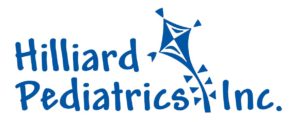Head Lice
Hilliard Pediatrics, Inc. - Dr. Tim Teller, MD
Introduction
Head lice are a scalp and hair infection from tiny gray bugs called lice. A live louse is 1/16th of an inch long, gray in color, difficult to see, and they move quickly. The eggs of the lice are called nits and are found attached to the hair. Please remember that head lice do not spread any disease, therefore they are not a health hazard. However, they certainly often cause itching of the scalp and neck.
Human head lice spread from one person’s hair to another person’s hair. Lice can spread from combs, hairbrushes, hats, pillows, bed clothes, and furniture to someone’s hair. Pets very rarely spread head lice to people. A live louse cannot live longer than 2 days away from the scalp.
Lice place their eggs very close to the scalp on the hair shaft. In 7 to 12 days (usually 8 or 9 days), the eggs (nits) hatch. In 9 to 12 days, the lice mature to adulthood and can quickly lay more eggs - as many as 8 in a day.
It can be difficult to tell the difference between the nits of head lice and dandruff or hair debris. Nits are firmly attached to the hair. The farther they are from the scalp, the longer time the nits (eggs) have been on the hair shaft. Nits start off just ⅛th of an inch from the scalp. Hair regularly grows about ½ inch per month. Therefore if nits are found more than an inch from the scalp, they have been there for weeks or months. It is also difficult to tell the difference between hatched nits and unhatched nits.
Remind your school-aged children to not share combs, hats, scarves, coats, etc. with other children because sharing these items makes it more likely to become infested with lice.
Cleaning the House
The goal in cleaning the house is killing any live lice or nits that are not on someone’s head when the medicated shampoo (or other treatment) is used. What we recommend.
- Vacuum your child’s room.
- Soak combs for 1 hour in container with some water and some anti-lice shampoo or cream rinse.
- Wash your child’s sheets, blankets, pillowcases, and any clothes worn in the past 3 days in hot water (nits and lice are killed in water at least 140 degrees).
- Hats, coats, scarves, pillows, fabric couch coverings and other items that cannot be washed should be set aside in sealed plastic bags for 2 weeks. This will ensure that any live lice or nits have died. Note: the over-the-counter “lice control” sprays are probably not worthwhile.
Different Over-the-Counter Treatments for the Live Lice
- Ivermectin is a lotion that is highly effective. It previously was only by prescription as Sklice® but has gone over-the-counter (called "ivermectin lotion 0.5% lice treatment:). Ivermectin is applied to dry hair. Leave on for 10 minutes then rinse out with water. Avoid contact with eyes and mouth. The ivermectin can be repeated in 10-14 days if live lice are re-seen. Ivermectin is approved for use down to 6 months of age.
- Nix® (permethrin) is an over the counter cream rinse that is an available treatment for lice. It is applied to hair that has been washed with a non-conditioning shampoo then towel dried. The hair and scalp should be saturated with the cream rinse. Leave the Nix on the hair for 10 minutes then rinse out. If live lice are seen in 7-10 days, the treatment with Nix should be repeated.
- Rid Lice-Killing Shampoo® (pyrethrium and piperonyl butoxide) is an over-the-counter treatment. Apply thoroughly to dry hair and to the skin areas behind the ears and behind the neck. Leave on the hair for 10 minutes. Then use warm water to make a lather and rinse well. A second treatment needs to be done in 7-10 days to kill any newly hatched lice.
- LiceMD® (dimethicone) is another over-the-counter treatment. It is applied to the hair and then you wait for 10 minutes. Then the comb that comes with the package is used to comb out the dead lice and the nits. Afterwards, wash the hair with shampoo and warm water. The treatment can be repeated later if the first treatment was not successful.
Head Lice Treatments Available by Prescription
- Ovide® (malathion) is a prescription lotion that is used if over-the-counter treatments have not been effective. Ovide® is applied to dry hair. Allow hair to dry naturally. Leave in over night then shampoo out in the morning. A second treatment in one week is usually not needed, but the above treatment should be repeated if live lice are seen in one week. Ovide® is not approved for children less than 2 years of age. There is now a generic available.
- Natroba® (spinosad) is a prescription topical suspension. It is applied for 10 minutes to the scalp and washed out with warm water. Nit combing is not required as this product kills both live lice and nits. It should be retreated in 7 days if there are live lice still present. As it is a new medication, it is expensive – with out of pocket expense being about $300.
- A course of the oral antibiotic Bactrim®. With resistant cases, Bactrim® can be effective at clearing the lice infection. It is believed to kill the lice by killing bacteria in the louse’s gut. Bactrim® is available as a generic and requires a doctor’s prescription. The complete 10 day course of the antibiotic is required. It is sometimes combined with treating with a medicated hair treatment.
Other Treatment Options
1. Lice Clinics of America (locally in Dublin, Ohio - www.liceclinicsofamerica.com or 614-482-4399. Lice Clinics of America treat lice in their clinic. Their success rate is excellent and they are thorough. Treatment may involve more than one visit (appointment only). They do lice screenings as well as treatment for live lice. You may use HSA/FSA dollars towards treatment.
Unproven Treatments for Head Lice
Smothering (or suffocating) the live lice with the use of Vaseline petroleum jelly, olive oil, butter, or mayonnaise is untested and therefore hard to recommend. Because these treatments are not as likely as Nix or other available treatments to work well, we cannot actively recommend these treatments. These would certainly be difficult to remove from the hair later (requiring lots of shampoo).
Removing the Nits from Your Child's Hair
Remove the nits from the hair by combing through with a special nit comb. There are various combs available – sometimes packaged with the treatment shampoos or rinses. The LiceMeister® is one of many metal combs that seem to work well and is available over the counter. The nits can be removed by hand individually also. This is not a quick job. It can take quite some time, especially with children with lots of thick, long hair, to comb through the hair and remove the nits.
Some products like LiceMD® and Rid Lice & Egg Comb-Out Gel® can make it easier to remove the nits. So can wetting the hair with white vinegar. These products are not necessary, but can be helpful if you are frustrated with combing through the hair to remove the nits (eggs).
Returning to School or Daycare
Once the treatment has been done, your child can return to school. For most children, that means that if your child is treated with a medication in the evening and you have done your best to remove nits from the hair that evening, they can return to school the following day. If your child has live lice, they are still contagious. Some schools still have a “no nits” policy, meaning that they have to be free of nits (the lice eggs) before they can return to school. Since after treatment the nits could be live or dead, it can be difficult to tell whether your child could still have live lice hatch and be contagious. So although we do not feel that it is practical to have a school policy of no nits before return to school, it is best to remove all the nits to the best of your ability.
Our Protocol for Treatment of Lice
As of the summer of 2014, we had seen so much resistance by the lice to the over the counter treatments that we decided to change our recommendations about lice treatment. This resistance continues now in 2024. One helpful thing is the availability of ivermectin over-the-counter, when this was previoulsy only available with a prescription. Please recall that having lice is not an emergency and can be dealt with during routine daytime office hours. We ask you to call at that time if you need to call us concerning lice.
If you find live lice:
- Use over-the-counter ivermectin or Nix® treatment OR arrange for an appointment with Lice Clinics of America.
- Clean the house.
- Remove nits from the hair.
- Your child can return to school the next day.
If you used the Nix® and see live lice in 7-10 days:
- Repeat the over-the-counter Nix®. These live lice are likely newly-hatched lice from nits and not lice that survived the first treatment.
- Another option is to see the Lice Clinics of America.
If you tried Rid® or LiceMD® or another over-the-counter treatment (but not ivermectin or Nix®) and you see live lice within a few days after using the product:
- Use ivermectin or Nix® instead. Or consider calling during routine office hours to discuss the use of a prescription medication.
- Clean the house.
- Remove any nits that you see.
- Consider an appointment with the Lice Clinics of America.
If you see live lice within the first 4-5 days after using Nix®:
- Use ivermectin lotion.
- Call us during regular business hours to discuss further treatment. We successfully treat many of these children with the prescription strength Ovide®, or Natroba®. The other treatments such as Lice Clinics of America ore LouseBuster® also will likely work, too.
- Clean the house again.
- Remove any nits that you find.
If you used a product that killed the lice and you find live lice more than 2 weeks after the treatment:
- Repeat the treatment. Your child likely became re-infected (from a family member, from school, etc.) and a second treatment will likely be effective.
- Again clean the house.
- Remove any nits that you find.
If you are having a hard time deciding whether your child has live lice and/or nits:
- We should see your child for a routine appointment in the office (so either call during regular office hours for an appointment or come in for walk-ins at 8am Monday through Friday.
- Another option is having the Lice Clinics of America screen for lice.
Last Updated: 01/2024

